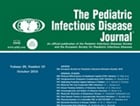Abstract and Introduction
Abstract
Background: Candida species are the third most common cause of pediatric health care–associated bloodstream infection in the United States and Europe. To our knowledge, this report from the International Pediatric Fungal Network is the largest prospective, multicenter observational study dedicated to pediatric and neonatal invasive candidiasis.
Methods: From 2007 to 2011, we enrolled 196 pediatric and 25 neonatal patients with invasive candidiasis.
Results: Non-albicans Candida species predominated in pediatric (56%) and neonatal (52%) age groups, yet Candida albicans was the most common species in both groups. Successful treatment responses were observed in pediatric (76%) and neonatal patients (92%). Infection with Candida parapsilosis led to successful responses in pediatric (92%) and neonatal (100%) patients, whereas infection with Candida glabrata was associated with a lower successful outcome in pediatric patients (55%). The most commonly used primary antifungal therapies for pediatric invasive candidiasis were fluconazole (21%), liposomal amphotericin B (20%) and micafungin (18%). Outcome of pediatric invasive candidiasis was similar in response to polyenes (73%), triazoles (67%) and echinocandins (73%). The most commonly used primary antifungal therapies for neonatal invasive candidiasis were fluconazole (32%), caspofungin (24%) and liposomal amphotericin B (16%) and micafungin (8%). Outcomes of neonatal candidiasis by antifungal class again revealed similar response rates among the classes.
Conclusions: We found a predominance of non-albicans Candida infection in children and similar outcomes based on antifungal class used. This international collaborative study sets the foundation for large epidemiologic studies focusing on the unique features of neonatal and pediatric candidiasis and comparative studies of therapeutic interventions in these populations.
Introduction
Candida species are the third most common cause of pediatric health care–associated bloodstream infection in the United States and Europe.[1,2] The attributable mortality from invasive candidiasis in children is 10%, and invasive candidiasis is associated with prolonged hospital stay and increased costs.[3] Coordinated efforts have succeeded in reducing the incidence and improving the outcomes of invasive candidiasis in adults; however, little work has been done to improve outcomes in children.
Several retrospective analyses of pediatric invasive candidiasis[3–11] have helped define the epidemiology and risk factors for disease. However, there have been only a limited number of prospective epidemiologic studies of invasive candidiasis that included pediatric patients.[12–14] Only 2 of those prospective epidemiologic studies were multicenter,[12,14] and all were conducted in earlier years when antifungal options were limited. Similarly, there are limited open-label,[15–18] pharmacokinetic[17,19] or clinical trial data in children with invasive candidiasis.[20]
The Mycoses Study Group (MSG) was founded to investigate systemic mycoses through clinical trials to move the treatment of invasive fungal infections in adult patients toward an evidence-based format. Although the MSG has occasionally included children during the last 3 decades, their mission does not focus on the growing burden of pediatric fungal disease. Similarly, the European Organization for Research and Treatment of Cancer (EORTC) Infectious Diseases Group has completed a large number of mycoses-related studies. However, most of their epidemiologic and antifungal studies either exclude children or enroll insufficient numbers to make a meaningful contribution. Because most studies worldwide have excluded children, our knowledge of these important infections is limited, and this has resulted in delays in obtaining efficacy data and licensing newer therapies.
Prospective studies of fungal epidemiology and treatment in children require a multiinstitutional design to achieve adequate power and demonstrate comparative effectiveness of therapeutic choices. To address this gap, we organized a unique multinational consortium known as the International Pediatric Fungal Network (PFN; https://pfn.pediatrics.duke.edu). This organization consists of 42 worldwide sites led by pediatric specialists in infectious diseases, hematology/oncology and hematopoietic stem cell transplantation (HSCT) and includes leading authorities on pediatric invasive fungal infections. The mission of this group is to generate prospective, multicenter, primary data needed to advance the field and ultimately develop robust evidence-based strategies to improve the prevention and treatment of pediatric fungal disease. The current study presents initial data from the largest reported prospective multicenter cohort of pediatric and neonatal patients with invasive candidiasis.
Pediatr Infect Dis J. 2012;31(12):1252-1257. © 2012 Lippincott Williams & Wilkins













